Music NFT Revenue Calculator
Your NFT Details
Revenue Breakdown
Enter details and click "Calculate Potential Revenue" to see projected earnings.
Understanding the Models
One-time sale price plus possible secondary-market royalties (5-10%).
Up-front sale + continuous royalty split per stream. Ideal for ongoing income.
Up-front sale + potential profit-sharing from merch/tours. Requires community management.
Imagine a fan not just streaming a song but actually owning a piece of it-complete with backstage access, a share of future royalties, and the power to vote on the next single. That’s the promise of music NFTs. By turning tracks, artwork, and experiences into unique blockchain tokens, musicians can cut out middlemen, keep a larger slice of the pie, and build communities that feel more like clubs than audiences.
Key Takeaways
- Music NFTs let artists set scarcity, price, and utility on their own terms.
- Three main engagement models dominate: direct-sale NFTs, royalty‑sharing NFTs, and DAO‑driven fan governance.
- Platforms like Sound.xyz, Royal, and SuperRare provide plug‑and‑play tools for minting, selling, and managing fan perks.
- Successful case studies (3LAU, Mike Shinoda, Deadmau5) show revenue multipliers of 5‑10× versus traditional streaming.
- A simple checklist can guide any musician from first mint to ongoing community nurture.
What Exactly Is a Music NFT?
Music NFT is a non‑fungible token that represents ownership of a specific piece of music‑related content-such as a track, album artwork, video, or bundled experience-on a blockchain. Because each token is unique (ERC‑721 or ERC‑1155), the owner can prove authenticity and, when programmed, receive special rights or benefits.
The blockchain backbone-usually Ethereum, Polygon, or Solana-stores a smart contract that defines what the NFT does. That contract can grant streaming access, unlock a virtual meet‑and‑greet, or even allocate a percentage of future royalty earnings.
Why Musicians Are Jumping on NFTs
Traditional streaming pays fractions of a cent per play, and record labels often keep 80‑90% of revenue. NFTs flip that equation:
- Control over scarcity: Artists decide how many copies exist, creating true collector value.
- Higher income share: Platforms like Sound.xyz let creators keep up to 95% of sales.
- Direct fan relationships: No algorithms or playlists dictate who sees your work.
- New utility layers: From exclusive merch to royalty splits, NFTs become multi‑purpose tickets.
Beyond money, NFTs turn fans into stakeholders. When a token grants voting rights, fans influence setlists, artwork, or release dates-making them feel part of the creative process.
Top Platforms Musicians Use
Choosing the right platform determines how much technical hassle you face and how rich the fan experience can be.
- Sound.xyz is a music‑first marketplace that lets artists mint NFTs, sell directly to fans, and embed unlockable content like unreleased stems or VR backstage passes.
- Royal focuses on royalty‑sharing NFTs. Fans buy a token and automatically receive a slice of streaming income each time the song plays.
- SuperRare started with visual art but now supports audio‑reactive video NFTs, ideal for one‑off collector pieces.
- eXTENDED SOUND HERO (XSH) blends gaming, AR/VR, and NFTs, giving fans a playable world where each avatar’s gear is an NFT.
All these services handle wallet integration, gas‑fee options, and basic community tools-so you don’t need to be a blockchain engineer to get started.
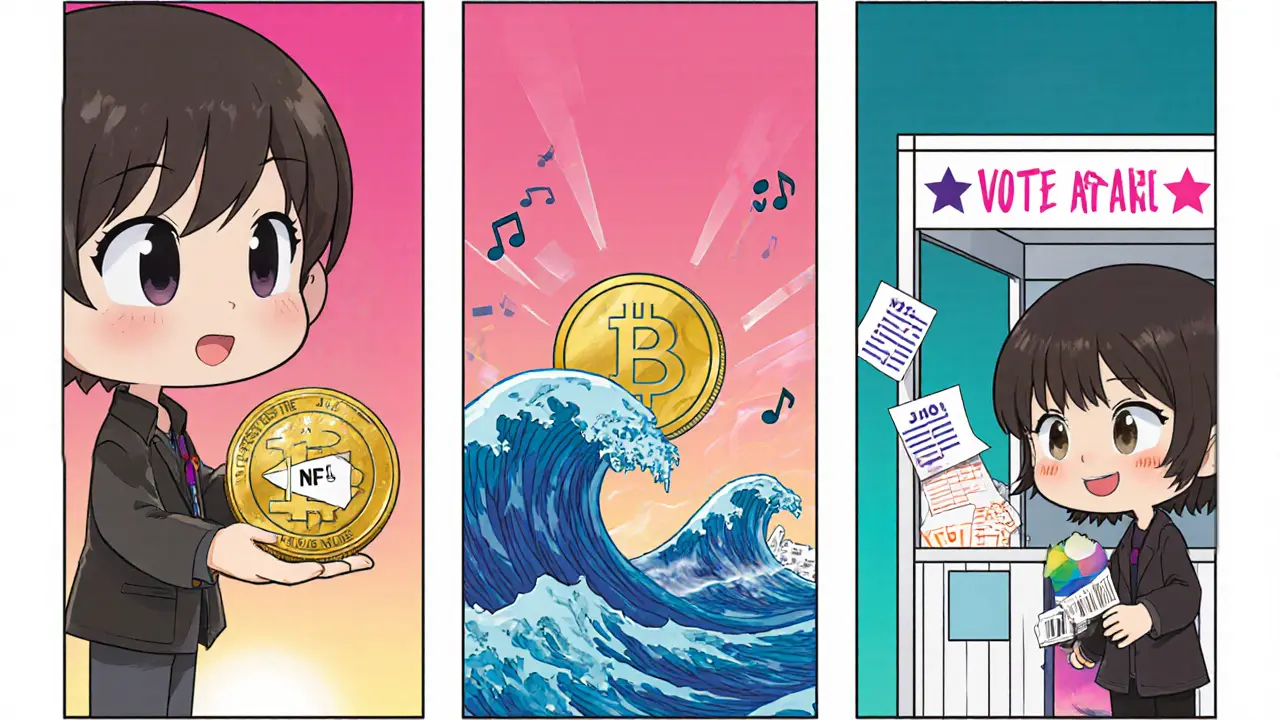
How to Launch Your First Music NFT: Step‑by‑Step
- Set up a digital wallet. MetaMask, Phantom, or Coinbase Wallet work with most platforms. Fund it with a small amount of the native token (ETH, MATIC, SOL) to cover minting fees.
- Choose a blockchain. Ethereum offers the biggest market but higher gas; Polygon and Solana are cheaper and faster.
- Define the utility. Will the NFT unlock an exclusive track, a virtual meet‑and‑greet, or royalty shares? Write this into the smart contract description.
- Prepare your assets. High‑quality audio (WAV/FLAC), cover art (JPEG/PNG), and any video or 3D files you plan to bundle.
- Mint the token. Use the platform’s upload wizard, set the number of copies (1 for a one‑of‑one, 100 for a limited edition), and confirm the transaction.
- Price and launch. Research comparable drops, consider a tiered pricing structure (early‑bird, VIP, general), and schedule the release.
- Promote to your fanbase. Share the mint link on socials, email newsletters, and Discord. Offer a sneak peek or a behind‑the‑scenes video to build hype.
- Deliver post‑sale perks. Once sold, automate the delivery of unlockable content via the platform or a private link. Keep the conversation alive with updates.
If you want to experiment with royalty sharing, replace step 5 with a Royal‑style contract that splits a percentage of streaming revenue each month. For DAO governance, add a governance token and set up a simple voting portal (many platforms integrate Snapshot).
Engagement Models Compared
| Model | Primary Fan Benefit | Artist Revenue Stream | Technical Complexity |
|---|---|---|---|
| Direct‑Sale NFT | Exclusive content, limited‑edition ownership | One‑time sale price + possible secondary‑market royalties (5‑10%) | Low - simple mint and marketplace listing |
| Royalty‑Share NFT | Ongoing royalty payouts tied to streams | Up‑front sale + continuous royalty split per stream | Medium - requires smart contract that tracks streaming data |
| DAO Governance NFT | Voting power on setlists, artwork, tour locations | Up‑front sale + potential profit‑sharing from merch/tours | High - needs tokenomics, voting platform, community management |
Pick the model that matches your goals. New artists often start with direct‑sale drops to test the waters, then graduate to royalty‑share or DAO structures as the community grows.
Real‑World Success Stories
3LAU - "Ultraviolet": The electronic producer released a blockchain‑exclusive album, pulling $11.6million in primary sales and secondary royalties. He later co‑founded Royal, turning his fans into revenue partners.
Mike Shinoda - Digital Art Drop: The LinkinPark co‑founder sold a single‑of‑a‑kind visual NFT for $30,000. He noted that streaming the same song worldwide would have earned under $10,000 after label cuts.
Deadmau5 - Audio‑Reactive Video: A one‑of‑one video NFT fetched $49,777 on SuperRare, showcasing how visual‑audio hybrids can command collector premiums.
These cases share three common threads: clear utility, strong personal brand, and a platform that handles the heavy lifting.
Building a Sustainable Fan Community
Launching a drop is just the first act. Ongoing engagement turns one‑off buyers into lifelong supporters.
- Regular syncs. Host monthly Discord AMAs where NFT holders can ask questions and suggest ideas.
- Tiered perks. Create bronze, silver, gold tiers-each unlocks deeper experiences (e.g., backstage virtual meet‑ups for gold).
- Reward loyalty. Airdrop new NFTs or exclusive merch to holders who have kept their tokens for 6+ months.
- Collaborate. Pair up with visual artists or other musicians to co‑mint cross‑genre collectibles, expanding both audiences.
Remember to stay transparent about tokenomics and any risks-market volatility can affect resale values, but the intrinsic fan connection remains valuable.
Checklist for Musicians Ready to Mint NFTs
- ✅ Choose a blockchain that balances cost and audience reach.
- ✅ Set up a secure digital wallet and fund it for gas fees.
- ✅ Define clear utility for each NFT tier.
- ✅ Prepare high‑resolution audio/video assets.
- ✅ Pick a platform (Sound.xyz, Royal, SuperRare) that matches your chosen model.
- ✅ Draft a simple smart‑contract description (most platforms auto‑generate).
- ✅ Plan a promotion schedule (teasers, countdown, community push).
- ✅ Build a post‑sale delivery system (automatic unlock links, Discord roles).
- ✅ Establish a community management routine (weekly updates, feedback loops).
- ✅ Monitor metrics: sales volume, secondary‑market activity, fan engagement rates.
Cross off each item before you hit “mint” to avoid costly re‑work.
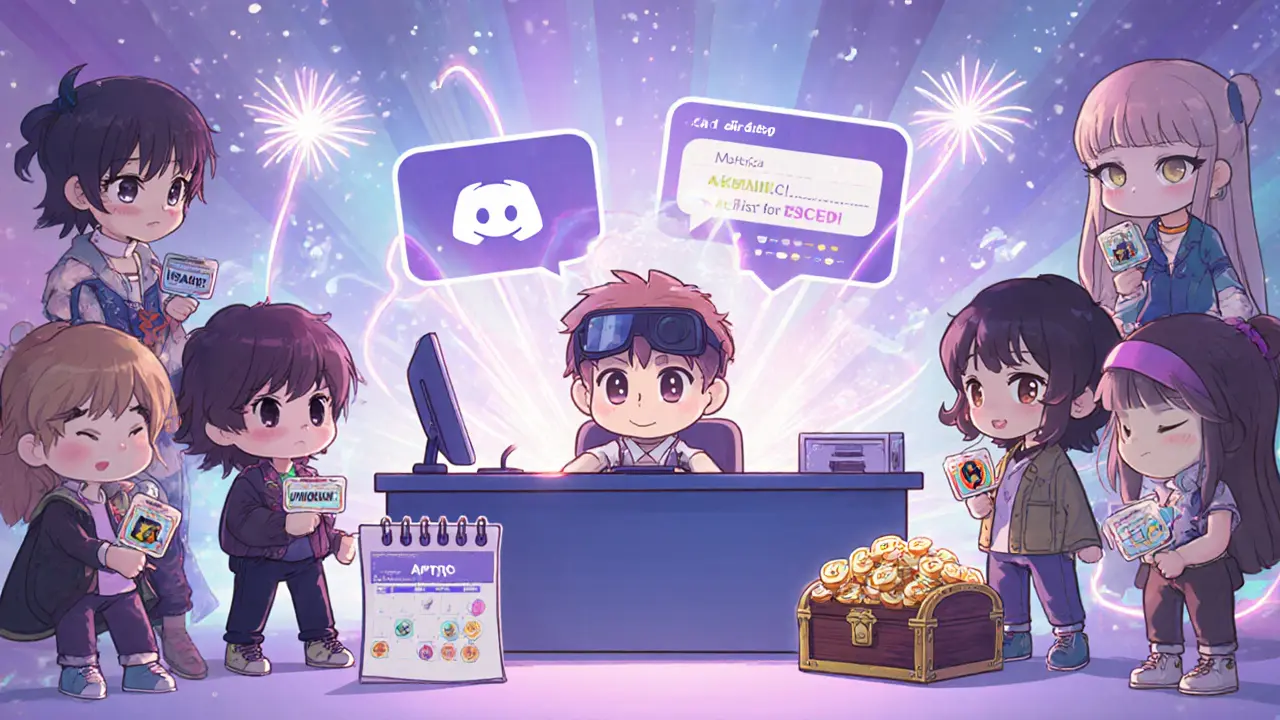
Frequently Asked Questions
Do I need to be tech‑savvy to sell music NFTs?
Not really. Platforms like Sound.xyz guide you through wallet creation, minting, and sales with step‑by‑step wizards. The steepest learning curve appears when you move into DAO governance or custom royalty contracts, but you can hire a developer for those pieces.
What blockchain should I pick?
Ethereum offers the largest buyer pool but higher gas fees. Polygon and Solana are cheaper and faster, making them great for large‑scale drops. Choose based on where your fans already have wallets.
Can fans really earn royalties from my songs?
Yes, platforms like Royal embed a royalty‑share clause into the NFT’s smart contract. Every time the track streams on a participating service, a tiny percentage flows back to token holders.
What are the biggest risks?
Market volatility can swing resale prices, and some fans may be hesitant to manage crypto wallets. Mitigate by offering clear guides, low‑cost entry tiers, and non‑speculative perks (like exclusive video content).
How do I keep my community engaged after the drop?
Schedule regular Discord events, reward long‑term holders with airdropped NFTs, and let fans vote on upcoming releases. Consistency beats flash‑in‑the‑pan hype.
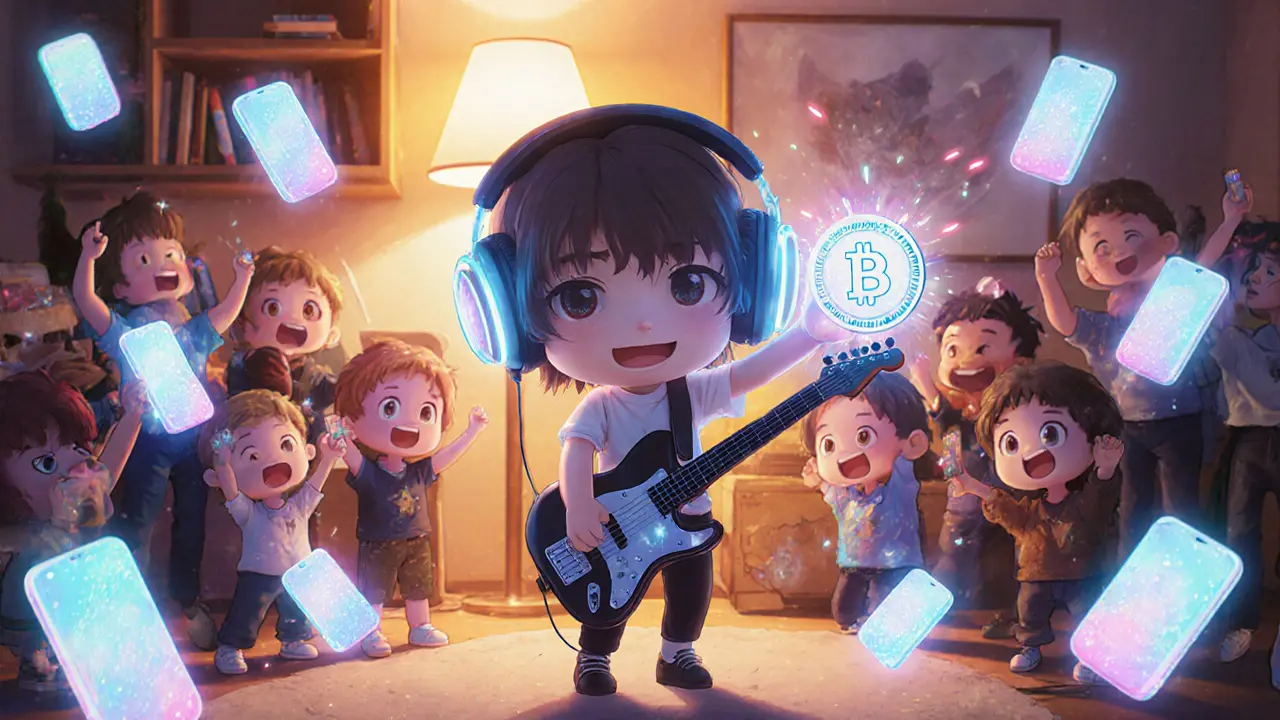
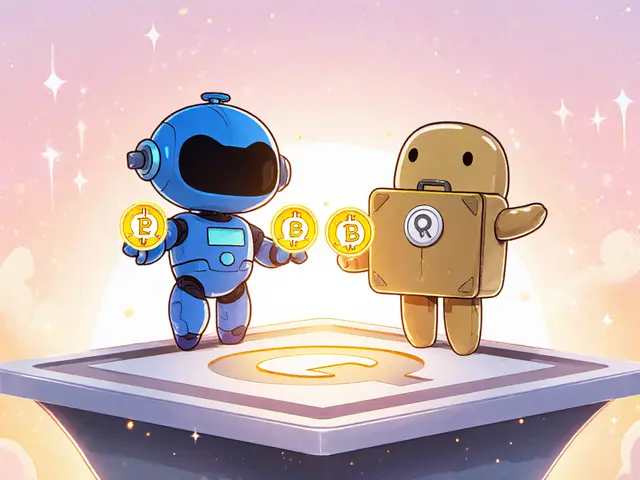
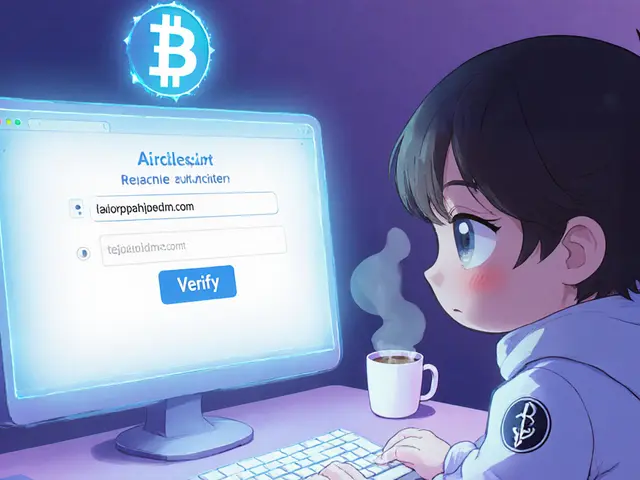
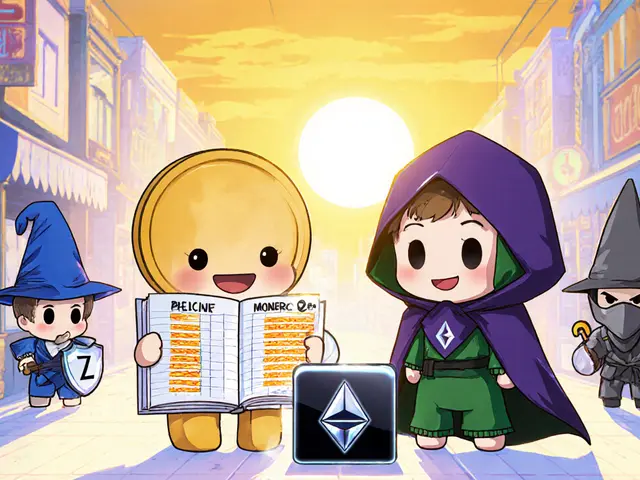
Jeff Carson
April 5, 2025 AT 01:11Wow, the whole idea of musicians minting NFTs to lock in fan love is 🔥! It lets artists cut out the middle‑man and give fans something unique, like a backstage pass you can actually own. Plus, the secondary‑market royalties mean creators keep earning when art changes hands – a real win‑win. 🎶💎
Anne Zaya
April 5, 2025 AT 15:05Honestly, it feels like the perfect blend of art and tech. Fans get exclusive tracks or experiences, and artists get a fresh revenue stream without the label drama.
Emma Szabo
April 6, 2025 AT 04:58The music world has always been about connection, and NFTs are just the newest language for that bond. By turning a song or a concert moment into a digital collectible, artists give fans a tangible piece of their creative journey. This not only deepens loyalty but also turns casual listeners into stakeholders in the artist’s future. Imagine owning a limited‑edition lyric sheet that unlocks a private Zoom jam session – that’s the kind of magic NFTs can unleash. From a financial perspective, creators can set up royalty clauses that kick in every time the token flips on the secondary market, creating a perpetual income stream. This is especially empowering for independent musicians who struggle with traditional streaming payouts. Moreover, the community‑governed DAO models let fans vote on merch designs or setlist choices, turning the fanbase into a co‑creative hub. The transparency of blockchain also assures buyers that they’re getting an authentic, verifiable piece of art, cutting out counterfeit worries. Artists can experiment with tiered releases – a basic NFT for the masses and an ultra‑rare, gold‑stamped version for superfans. The tiered approach fuels scarcity, driving excitement and higher per‑unit prices. From a marketing angle, each NFT drop becomes an event, generating buzz on social platforms that traditional releases often lack. The buzz translates into media coverage, playlist placements, and ultimately, more streams and ticket sales. For fans, the thrill of owning a piece of history – perhaps the first ever tokenized album – adds a collector’s pride that streaming alone can’t match. In the long run, this direct‑to‑fan economy could reshape how record labels operate, pushing them to offer more equitable contracts. All in all, NFTs are carving a vibrant, interactive pathway for artists and fans to grow together beyond the old paradigms.
Fiona Lam
April 6, 2025 AT 18:51All that hype is just buzz‑saw noise – most of these NFT drops are cash grabs, and fans end up with worthless blobs on a chain.
Sumedha Nag
April 7, 2025 AT 08:45Sure, but why should anyone pay extra for something you can stream for free? The whole NFT craze feels like a status symbol for the tech‑obsessed.
Holly Harrar
April 7, 2025 AT 22:38I get why u r skeptical, but honestly it can be a real game‑changer. If an artist sets a fair price and gives real perks – like exclusive merch or early ticket access – it’s definitely worth a try. Its not just about hype, it’s about building a community that feels valued.
Vijay Kumar
April 8, 2025 AT 12:31Yo, think of it as a new stage. Musicians can turn fans into partners, and every token sold is a vote of confidence that fuels fresh creativity.
Edgardo Rodriguez
April 9, 2025 AT 02:25Indeed, the emergence of non‑fungible tokens in the musical sphere invites us to reconsider traditional notions of ownership, value, and artistic exchange; it challenges the linear distribution model, inviting a multidimensional dialogue between creator and audience, a dialogue that reverberates across blockchain ledgers, echoing the very rhythms that inspire the music itself.
mudassir khan
April 9, 2025 AT 16:18Frankly, the proliferation of NFTs within the music industry represents nothing more than a speculative bubble, a veneer of innovation masking the underlying desperation of artists to monetize attention; it is a lamentable trend that undermines genuine artistic merit.
Bianca Giagante
April 10, 2025 AT 06:11While I understand the concerns raised, it is also important to acknowledge the potential benefits these digital assets could bring to emerging musicians, offering them a platform to directly engage with their audience, thereby fostering a more inclusive and sustainable ecosystem.
Andrew Else
April 10, 2025 AT 20:05Oh great, another way to pay for music we already stream for free. 🙄
Susan Brindle Kerr
April 11, 2025 AT 09:58Behold! The era of NFT serenades has arrived, and we shall forever sing praises to this glittering revolution, lest we be left in the shadows of antiquated sound!
Jared Carline
April 11, 2025 AT 23:51It would be misguided to endorse such a fleeting trend without rigorous analysis; the long‑term viability of NFTs in music remains unproven, and investors should exercise caution.
raghavan veera
April 12, 2025 AT 13:45Honestly, there’s room for both sides – some artists genuinely use NFTs to give fans cool experiences, while others just chase hype. It’s a mixed bag.
Danielle Thompson
April 13, 2025 AT 03:38Love the idea! 🌟
Eric Levesque
April 13, 2025 AT 17:31Artists need control, period.
alex demaisip
April 14, 2025 AT 07:25From a fiduciary perspective, the tokenization of auditory assets introduces a novel asset class that necessitates comprehensive regulatory frameworks, robust KYC protocols, and rigorous valuation methodologies to mitigate systemic risk.
Elmer Detres
April 14, 2025 AT 21:18Indeed, when creators and fans co‑create value through NFTs, it cultivates a symbiotic ecosystem; keep nurturing that connection, and the music will thrive. 🎶🚀
Tony Young
April 15, 2025 AT 11:11Remember, the real power lies in the story you tell – a well‑crafted NFT can become a legend, turning a simple song into an epic saga that fans will cherish forever. 🌈